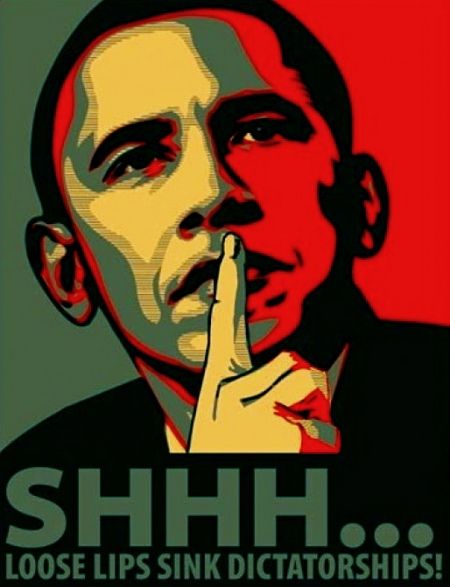
© Unknown
The nation's largest news organizations lodged a complaint Thursday against the White House for imposing unprecedented limitations on photojournalists covering President Barack Obama, which they say have harmed the public's ability to monitor its own government.
"Journalists are routinely being denied the right to photograph or videotape the president while he is performing his official duties," according to a letter the organizations sent to the White House. "As surely as if they were placing a hand over a journalist's camera lens, officials in this administration are blocking the public from having an independent view of important functions of the executive branch of government."
Presidents often look for ways to get their own messages out. But media experts say Obama's administration has developed an aggressive strategy to use social media, including government-sponsored websites and blogs, as well as Twitter, Instagram and Flickr accounts, to circumvent the media's constitutional duty more than its predecessors have.
"
You are only seeing what they want you to see," said Lucy Dalglish, the dean of the Philip Merrill College of Journalism at the University of Maryland.
White House spokesman Josh Earnest defended the release of photos and videos, saying the practice helps Obama live up to his pledge of transparency by allowing the public to have greater access to the inner workings of the administration when it's not feasible for news media to be in the room.
"What we've done is we've taken advantage of new technology to give the American public even greater access to behind-the-scenes footage or photographs of the president doing his job," Earnest said. "To the American public, that's a clear win."
He said the news organizations' protests were just part of the natural tension between journalists and those they covered.
"The fact that there is a little bit of a disagreement between the press corps and the White House press office about how much access the press corps should have to the president is built into the system," he said at the daily White House news briefing. "If that tension didn't exist, then either you or we aren't doing our jobs."
Relations between Obama officials and journalists have further deteriorated this year.
News reports last spring indicated that the Justice Department had secretly seized the telephone records of reporters at the Associated Press and investigated a Fox News reporter as a potential criminal for doing his job.
In the most recent situation, the news organizations stressed that they're referring only to presidential activities of a "fundamentally public nature," not private or restricted events, including ones that may affect national security. But the White House often says the closed events are private, even though it releases its own photographs of the events.
Examples cited in the letter are Obama's meetings with the Congressional Hispanic Caucus on July 10, former Secretary of State Hillary Clinton on July 29 and Pakistani human rights activist Malala Yousafzai on Oct. 11.
In each case,
journalists weren't allowed - and sometimes were unaware - of the event. The White House later released written summaries of the events, along with photos taken by a government photographer.
On Thursday, the presidents of the American Society of News Editors and the Associated Press Media Editors sent a letter to their members urging them to stop using handout photos and video from the White House.
"We must accept that we, the press, have been enablers," the letter says. "We urge those of you in news organizations to immediately refrain from publishing any of the photographs or videos released by the White House, just as you would refuse to run verbatim a press release from them."
It's unclear how many news organizations use handout photographs from the White House. McClatchy-Tribune Information Services generally doesn't do so unless they were shot in areas that the media don't expect to have access to, such as the Situation Room or the private residence areas of the White House.
Harry Walker, the director of the McClatchy-Tribune Photo Service, said opening access to events was "the foundation for journalism, not just photojournalism."
The letter was signed by 38 news organizations, including all the major broadcast and cable networks, wire services, online services and newspapers, including The
New York Times, The
Washington Post and the McClatchy Co., which owns 30 daily newspapers across the nation.
The White House Correspondents' Association and White House News Photographers Association also signed the letter. McClatchy's government and politics editor, Steven Thomma, is the president of the White House Correspondents' Association.
The letter, which was addressed to White House Press Secretary Jay Carney, a former reporter for Time magazine, requested a meeting to discuss the issue.
Reader Comments
to our Newsletter